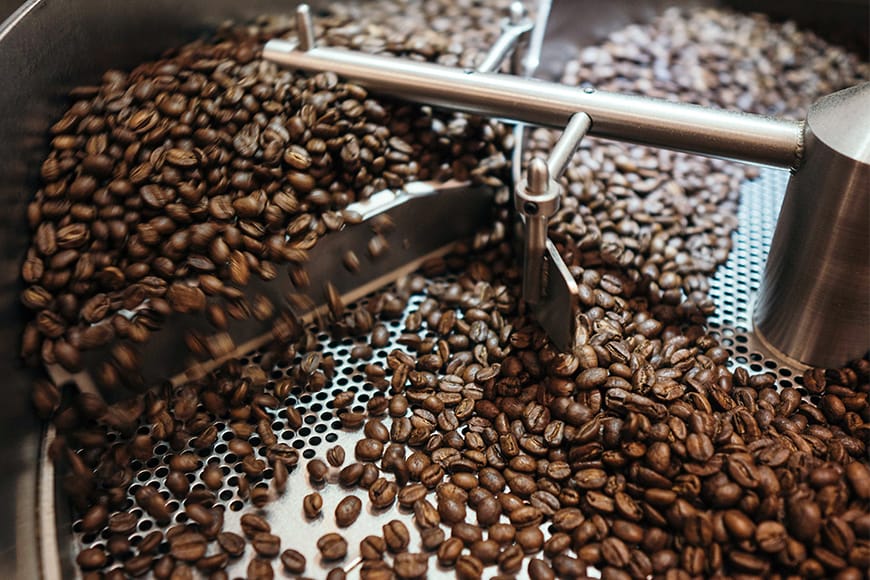Does Light Roasted and Dark Roasted Coffee Differ in Caffeine Content?
Put simply, the roast level of coffee beans does not have a significant effect on the caffeine content of the coffee. Caffeine content is primarily determined by the type of coffee plant, growing conditions, processing method and the amount of caffeine in the individual coffee bean, rather than the roast level.
During the roasting process, coffee beans undergo a series of chemical reactions that can affect the flavour and aroma of the coffee, but do not significantly alter the caffeine content. While dark roast coffee beans may appear to be more caffeinated due to their darker colour, this is actually an illusion caused by the roasting process.
Dark roast coffee beans, such as The Great Dane, are roasted for a longer period of time at higher temperatures, which causes them to lose moisture and expand in size. As a result, a cup of dark roast coffee made from the same amount of beans as a cup of light roast coffee will actually contain less caffeine, because the beans are larger and have less mass.

However, there are some factors that can affect the caffeine content of coffee. For example, the brewing method can impact the amount of caffeine that is extracted from the beans. Coarsely ground beans will generally have a lower caffeine content than finely ground beans, because the water has less surface area to extract caffeine from the beans. Similarly, longer brewing times will generally result in higher caffeine content, because the water has more time to extract caffeine from the beans.
In general, the caffeine content of coffee can vary widely, but most types of coffee contain approximately 60-100mg of caffeine per 240ml serving. Decaffeinated coffee, on the other hand, has had most of the caffeine removed and typically contains only trace amounts of caffeine, usually less than 5mg per 240ml serving.